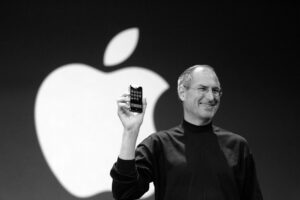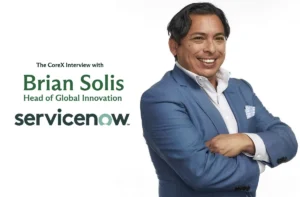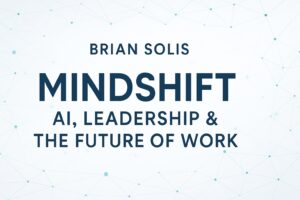 It’s said that there are two things certain in life…death and taxes. We can also add the certainty that a great divide will always exists in each generational shift. The “generation gap” as it’s formally called, represents the difference of opinion between one generation and another regarding beliefs, politics or values. Depending on the situation or circumstance, this gap can foster debate, ignorance and even contention, often pitting younger people against their parents, grandparents, teachers, managers and fellow citizens. But, this is a time not only of great divide, but also of great disruption. Continuing on a path of “business as usual” is a sure passage to irrelevance or obsolescence. If we do not shift perspectives and mindsets to build bridges between generations, we distract or prevent productive and lucrative investments in equitable transformation and innovation.
It’s said that there are two things certain in life…death and taxes. We can also add the certainty that a great divide will always exists in each generational shift. The “generation gap” as it’s formally called, represents the difference of opinion between one generation and another regarding beliefs, politics or values. Depending on the situation or circumstance, this gap can foster debate, ignorance and even contention, often pitting younger people against their parents, grandparents, teachers, managers and fellow citizens. But, this is a time not only of great divide, but also of great disruption. Continuing on a path of “business as usual” is a sure passage to irrelevance or obsolescence. If we do not shift perspectives and mindsets to build bridges between generations, we distract or prevent productive and lucrative investments in equitable transformation and innovation.


The generation gap is as certain as it is unproductive, but it doesn’t have to be. In my work and research in digital transformation, I see cognitive biases unnecessarily creating tension between groups of people in all industries, in all facets of work, in roles at every level in every function. These disconnects are usually based on demographic stereotypes, which fosters tension, separates the workforce and inhibits much-needed opportunities for cross-generational and functional collaboration, iteration and innovation.
When you talk to older generations about their impressions about younger people, you hear them pigeonholed by a number common stereotypes:
- They’re lazy and lack loyalty.
- They’re entitled and they all think they’re special.
- They’re overly sensitive and can’t take criticism or feedback.
- They want a trophy for showing up.
- They’re easily distracted.
- They can’t commit to jobs.
- They’re all about “me, me, me.”

Instead of trying to understand the differences or nuances between older generations and Millennials and Centennials, the generation gap creates “us vs. them” environment that promotes hierarchies, blaming and shaming and inhibited perspectives that confine opportunities for empathy and cooperation. If you believe the press, for instance, “Millennials are killing” everything from Budweiser and canned tuna to homeownership to motorcycle sales to restaurant chains to breakfast cereal and American cheese to Costco and Home Depot to paper napkins and golf and anything and everything in between.
Somewhere in these stories however, are behavioral and also emotional clues as to why things are changing. The less time we spend studying preferences, expectations, intent and aspirations, the more we miss opportunities to counter disruption through transformation and innovation.
For example, in schools/universities, education systems and curriculum are slow to keep up with not only the times, but also with digital-first brains and behaviors. In the workplace, management, HR and IT technologies, processes and policies are unorthodox and counterintuitive to the way digital natives think and operate. If you want to, you can find gaps and opportunities everywhere.

These gaps represent opportunities to explore new ways to learn, unlearn, work and grow. But this can only happen if everyone believes that they have something to gain and contribute. They have to believe that their way isn’t the only way or that their life experiences aren’t mutually exclusive, entitling or absolute. The more we are encouraged and incentivized, as individuals and as a dynamic and diverse group or team, to continually acquire new mindsets, skills and experiences, the greater the creativity, change and progress.
To help, I created this Slideshare to give a voice to Millennials and Centennials among audiences who are quick to judge younger generations. When it comes to leadership, there is much work to be done. After all, it’s not about “us vs. them.” It’s about “us” and how “we” pave a more productive, collaborative and rewarding future for all. We all have a role to play in closing the generation gap and shaping the future together. And, the future starts by accepting that we also, right now, play a role in feeding the gap.
I hope this helps…
Brian Solis, Author, Keynote Speaker, (Actual) Futurist
Brian Solis is principal analyst and futurist at Altimeter, the digital analyst group at Prophet, Brian is a world renowned keynote speakerand 8x best-selling author. In his new book, Lifescale: How to live a more creative, productive and happy life, Brian tackles the struggles of living in a world rife with constant digital distractions. His model for “Lifescaling” helps readers overcome the unforeseen consequences of living a digital life to break away from diversions, focus on what’s important, spark newfound creativity and unlock new possibilities. His previous book, X: The Experience When Business Meets Design, explores the future of brand and customer engagement through experience design.
Please, invite him to speak at your next event or bring him in to your organization to inspire colleagues, executives and boards of directors.
Follow Brian Solis!
Twitter: @briansolis
Facebook: TheBrianSolis
LinkedIn: BrianSolis
Instagram: BrianSolis
Pinterest: BrianSolis
Youtube: BrianSolisTV
Newsletter: Please Subscribe
Speaking Inquiries: Contact
____________________________
Follow Lifescale!
Main Newsletter: Please Subscribe
Coaches Newsletter: Please Subscribe
Twitter: @LifescaleU
Instagram: @LifescaleU
Facebook: Lifescale University





Leave a Reply